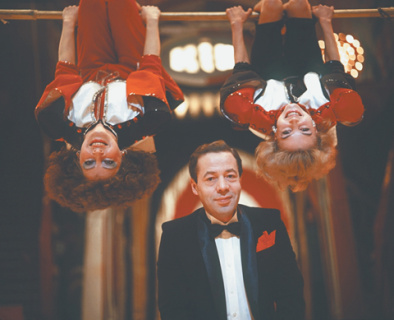
In the annals of the Cold War, few stories blend personal romance and state power as dramatically as that of Igor Kio, the Soviet Union’s premier illusionist, and his forbidden love for Galina Brezhneva, the daughter of the man who would soon lead the superpower. In 1961, a whirlwind romance on a state-sanctioned circus tour in Japan ignited between the 17-year-old magician and the 32-year-old Galina. Their affair culminated in a secret marriage, a defiant act of personal freedom that lasted a mere ten days before the full weight of the Soviet state crashed down upon them.
Igor Kio was a scion of Soviet cultural royalty, the son of the legendary illusionist Emil Kio, who founded a circus dynasty. From a young age, Igor proved himself a master of the craft, performing up to 600 shows a year in sold-out arenas from Moscow to Siberia. The Soviet circus was a major tool of international soft power, and Kio, with his spectacular illusions like “Sawing a Woman in Half,” became one of its most celebrated ambassadors, captivating audiences worldwide and continuing a legacy that was a cornerstone of Soviet entertainment.
The brief marriage was undone not by a grand decree, but by a masterful piece of political sleight of hand. Leonid Brezhnev, then a rising power in the Politburo, discovered a minor bureaucratic flaw: Galina’s divorce papers had been finalized eight days after filing, not the legally required ten. This pretext was all that was needed for the state apparatus to intervene. In the city of Sochi, KGB agents reportedly confiscated the couple’s passports, and the marriage was officially annulled. The incident was a stark reminder that in the USSR, even the most famous artists were subject to the whims of the powerful, with Brezhnev himself proving to be the nation’s ultimate illusionist.
Despite this personal clash with the state, Kio’s international star continued to rise. He moved beyond his father’s classic acts to create his own groundbreaking illusions, earning him global acclaim. In 1970, he was awarded the prestigious “Oscar” prize in Belgium as “Best Artist,” a rare honor for a Soviet citizen. He was later invited to join the exclusive American “Brotherhood of Magicians,” and a Japanese film company produced a documentary celebrating his family’s legacy, cementing his status as a global phenomenon who transcended the Iron Curtain.
Kio’s career mirrored the seismic shifts within his homeland. He spent decades as a leading artist within “Soyuzgostsirk,” the mammoth state-run entity that managed over 70 permanent circuses and entertained 50 million people annually. But as the Soviet Union began to crumble under Perestroika, so too did this centralized system. Witnessing the decline, Kio made a bold move that was emblematic of the changing times.
In 1989, just before the fall of the Berlin Wall, Kio left the state system to found his own private company, the “Igor Kio Show-Illusion.” This entrepreneurial venture allowed him to not only organize his own international tours but also to promote other Russian artists in the new, market-driven landscape. It was a testament to his ability to adapt and thrive, transforming himself from a state-supported artist into a self-made cultural impresario in post-Soviet Russia.
Igor Kio’s life was a perpetual tour, taking him from Japan to the United States and across Europe and Australia. His story is more than a biography of a brilliant magician; it is a compelling reflection of the 20th century. He was an artist who navigated the treacherous currents of a totalitarian regime, dared to challenge its leader in the most personal of ways, and successfully reinvented himself amidst the collapse of an empire, leaving a legacy of magic, resilience, and defiance.
